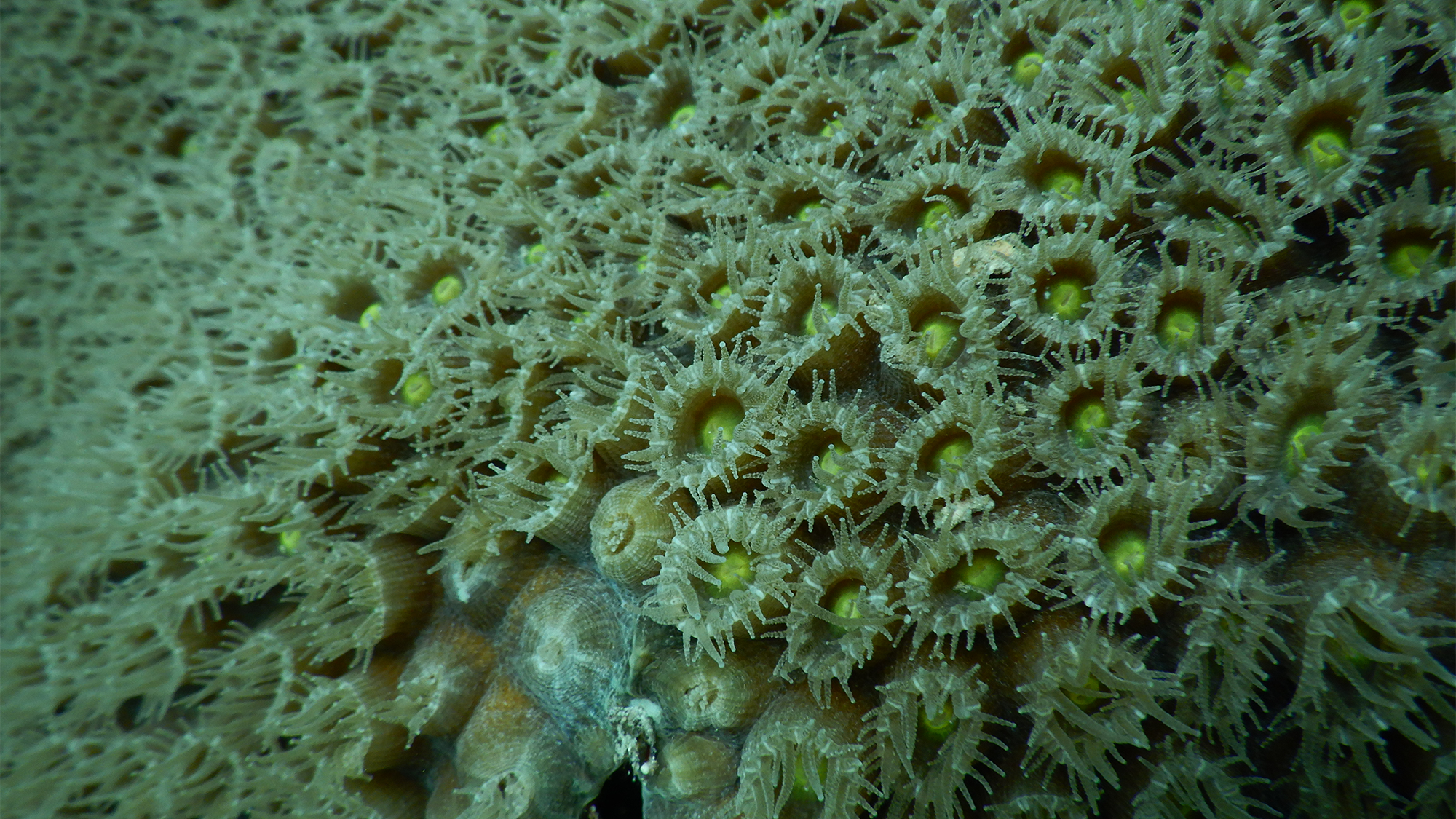

Discovered in 2014, stony coral tissue loss disease (SCTLD) has rapidly spread in the warm waters of the Caribbean. The mysterious ailment that targets hard corals has harmed more than 22 species of stony corals in Florida, the U.S. Virgin Islands, and Puerto Rico. Cases have been confirmed in at least 20 other countries and territories. A 2022 study of the coral species Pseudodiploria strigosa estimated a between 60 and 100 percent mortality rate in the Caribbean alone.
While the precise cause is unknown, scientists are working to develop effective treatments. In a study published April 6 in the journal Communications Biology, a team of scientists describes the first effective bacterial probiotic for treating and preventing SCTLD. Using a probiotic provides an alternative to using the broad-spectrum antibiotic amoxicillin. So far, using amoxicillin has only been proven to treat the disease, and also runs the risk of promoting antibiotic-resistant bacteria.
[Related: Disease-resistant super corals can save vulnerable reefs.]
Once coral is infected with SCTLD, its colony of polyps can die within only a few weeks. “It just eats the coral tissue away,” Valerie Paul, co-author of the study and a marine biologist and chemical ecologist at the Smithsonian Marine Station at Fort Pierce, Florida, said in a statement. “The living tissue sloughs off and what is left behind is just a white calcium carbonate skeleton.”
While probing how the disease spreads, Paul and a team noticed that some fragments of great star coral (Montastraea cavernosa) quickly developed SCTLD’s characteristic lesions and died, while other pieces didn’t get sick at all. While the precise cause of the disease is unknown, pathogenic bacteria was a suspected culprit in the disease’s progression, since antibiotics were an effective treatment for the disease.
With this in mind, the team collected samples of the naturally occurring, non-pathogenic bacteria present on a pair of disease-resistant great star coral fragments. After testing the samples, the team tried to identify if there were any naturally occurring microorganisms protecting some great star corals from the SCTLD.
The team used three strains of harmful bacteria from corals that had previously been infected to further test 222 bacterial strains from the disease-resistant corals. While they found that 83 strains that had some antimicrobial activity, a strain named McH1-7 particularly stood out. Further chemical and genetic analysis of McH1-7 confirmed the compounds behind its antibiotic properties and the genes behind those compounds.
[Related: Scientists grow stunning, endangered coral in a lab.]
When they tested McH1-7 with live pieces of great star coral, the tests revealed a final piece of decisive proof: McH1-7 stopped or slowed the progression of the disease in 68.2 percent of the 22 infected coral fragments. It even prevented the sickness from spreading during in all 12 transmission experiments.

Some next steps for the team are to develop better delivery mechanisms to use this probiotic method at scale in the ocean. The primary method of applying this coral probiotic now is to wrap the coral in plastic to create a makeshift mini aquarium and then inject the helpful bacteria, which would not be feasible on a large scale. It is also not clear if this bacterial strain isolated from the great star coral will have the same effects for other coral species.
To the team, it is still a welcome bit of news, as it could help prevent inadvertently spawning an antibiotic resistant bacteria and help corals in an ever changing climate. “Between ocean acidification, coral bleaching, pollution and disease there are a lot of ways to kill coral,” Paul said. “We need to do everything we can to help them so they don’t disappear.”
